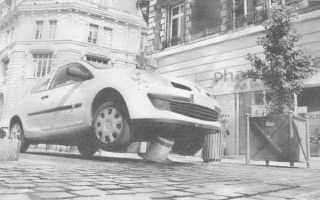 |
 previous / next column previous / next column
A PHYSICIST WRITES . . .
(June 2010)
As I said in last month’s column, Mrs S and I were able to travel by air to the S of France and back on schedule: the Icelandic volcano, whose name I daren’t try to type, calmed down just in time. I read that while it was still fully active, scientists from Reading University and elsewhere launched a special weather-balloon from Scotland up into the ash cloud. An unexpected discovery was that the ash was electrostatically charged, in a way that seemed intrinsic to the material, rather than caused by local weather conditions or the volcano itself (hundreds of miles off).
This led to suggestions that if charge-sensors were fitted to aircraft, air space would not have to be automatically closed off again in future: pilots could detect an ash cloud ahead for themselves. Now I think there’s surely too much static charge around a plane already, for a sensor to be able to sense ash far in front! However, the latest idea I’ve heard could be more successful: the ash is said to absorb infra-red radiation, so a long-range infra-red camera on the aircraft should reveal it as a shadow.
But I digress. Quite the most amusing item I saw in the French local press (not that I spent too much time scanning it) was this photo of a car in the air:

Don’t be confused by the litter-bin on the far side of the road. The picture caption translated roughly as follows: “Who has never had fear that this will happen, at the moment of getting over an obstacle? An automobilist achieved this very regrettable exploit: while he was passing over an automatic bollard regulating access to the Boulevard Foch, this stood up again. So well that it lifted his Renault, immobilized, the two front wheels in the air. In addition to the disagreeableness caused by the accident itself and related complications in the opinion of his insurer, the unhappy driver was also obliged to endure the sourires en coin of passers-by.” This phrase seems to translate as smirks, or half-smiles — though I would have expected the French to laugh out loud like anyone else. But perhaps the picture-heading itself poked a sufficient finger of fun at the victim: La photo du jour.
I’m sorry that this website column is going to be rather short measure. The reason is that a section of the newsletter version, concerning stereoscopic photos, is contained in last month’s web column (which I assume you’ve already seen), where it slotted in better.
But here’s a curious footnote on viewing stereo images: whatever the resolution of the individual pictures — in other words, however fuzzy they are — they will appear noticeably sharper and freer from ‘noise’ when you look at them together in stereo. How is this possible? Once again, it’s a trick of the brain, as it processes and merges the images. Though actually it’s a relatively minor feat, compared with most of the others that the brain performs in enabling you to see.
Finally, let’s go back to that ash from Eyjafjallajökull (I’m afraid I’ve cheated, rather, by pasting the name in from elsewhere): while it was at its worst I heard of an enterprising traveller, stranded somewhere in southern Europe, who bought a car from a local expat for a few hundred pounds, drove it all the way home and then (as it was UK-registered, conveniently) sold it on, at no great loss!
Peter Soul
previous / next column
|